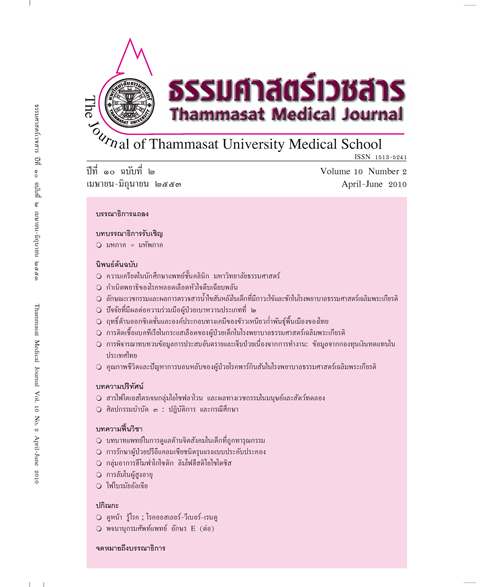Factors influencing to compliance of type II diabetic patients
Keywords:
Compliance, Diabetes Mellitus, Laos Peoples Democratic RepublicAbstract
Background: Diabets mellitus is the important cause of cardisvascular disease kingney disease and other systemiccomplications. Control of diabetes mellitus can reduce these complications. Curently, there has beenincreasing awareness in type II diabetes and its consequences in Laos PDR.
Objective: To determine the factors influencing compliance in diabetic patients. The factors were divided intointernal factors, external factors and social support factors.
Method: The study was designed as analytical study. A total of 197 type II diabetic patients both maleand female attending the diabetes mellitus (DM) clinics at the Mahosot and Sethathirat hospitals,Vientiane Capital were interviewed during December 2008 and January 2009 by using validatedquestionnaires. Patients were divided into two groups: patients who were able to control blood glucose(well controlled patients) and patients who were unable to control blood glucose (poor controlledpatients).
Result: The finding showed that from general information, percentage of well controlled patients who werediabetic more than 6 years was less than that of poorly controlled patients (p=0.029). Percentage ofwell controlled patients who had body mass index more than 23 was less than that of poorly controlledpatients (p=0.006). Well controlled patients had higher level of knowledge and attitudes than poorlycontrolled patients (p=0.001 for both factors). For level of compliance, well controlled patients hadhigher level of compliance for diet, medication, exercise, general and foot care, and stress managementthan poorly controlled patients (p=0.00 for all 5 factors). For relationship between factors and compliancelevel, information and instrument support were significantly related to general and foot carecompliance level (p=0.029 and 0.024, respectively). Duration of being diabetic patients andadmittance support were significantly related to stress management compliance level (p=0.02 for bothfactors).
Conclusion: Well controlled patients had higher level of compliance than poorly controlled patients in all aspects.Social support were significantly related to compliance level.
Key words: Compliance, Diabetes Mellitus, Laos Peoples Democratic Republic


